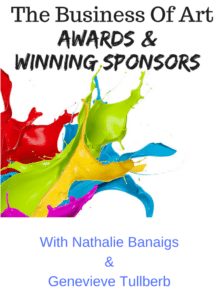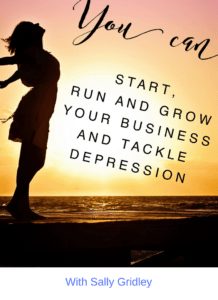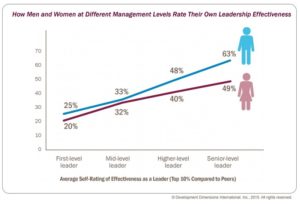Stronger Wings For Stronger Women
Listen in to find out how Gemma Sharpe shifted from her corporate career in HR, battled breast cancer and turned what she learned about building her own confidence into a business programme helping other women to do the same. Gemma started her business Lordene Learning to help women and developed her own 5 Pillars of Resilience and Wellbeing which she shared with us live on air. And what is RAW ? “Feeling good and functioning well, with the strength to deal with difficult situations, cope with challenges and adapt to change” This is one of our favourite interviews – Gemma is a real pro, a qualified coach and clearly knows her corporate stuff as well – but there was no jargon, no cliched hackneyed old coaching terms. She turned her troubles with cancer into a truly inspirational journey of one woman launching her business to turn her life around, and the life of those she works with. We hope you enjoy listening as much as we enjoyed having Gemma in the studio with us. Read Gemma’s Profile and Connect
Tackle Depression Through Dance
Sarah comes from the angle that everyone can dance – no matter what their circumstances – and they can. Even if all you can do is tap your toe, you’re dancing. And when you hear about how dancing can build resilience in all areas of your life, this is so so important. What a lively episode! For starters, we had not one but two young female entrepreneurs in the studio. One of them was our very own Kelly Culver, Content And Production Manager for the show and a Social Media Guru in her own agency. Also in the studio, we had Sarah Turner, a dance artist who uses her dance artistry alongside teaching and motivation skills to help people with addiction, depression and mental health issues to improve their lives. Listen in to hear how you can motivate yourself and feel better all round using the magic of dance, as well as ideas and stories about being a young woman in business.
Boss it like a Military Spouse ~ What we can learn from Britain’s toughest bunch
Previously, I never talked about my personal life in work and I try not to bore my friends too much about my business. But really I’m kidding myself; the two elements are inextricably linked. They literally rely on one another. So in a certain degree of seriousness what can business owners learn from the Military spouses? In my opinion, all you need is G.I.N. – Grace of all trades, Inferno Fighting, Necessary Assistance. No article referencing the military should be without an acronym. It looked fun, I wanted a go. Grace of All Trades Sorry, Jack was busy. Military spouses assume many daily roles including that of a mother, a father, a friend, a neighbour, an agony aunt, a plumber, a teacher, a taxi driver, a dog walker, a negotiator and a crisis solver. It’s a lot of hats for one person but it’s not dissimilar to running a business. You need to be adaptable and put on many different ‘hats’ every day. Example: You might start with your ‘admin hat’ and wade through the emails, then move to your ‘manufacturing hat’ and ‘crisis hat’ as an element in your production process breaks down and by lunchtime you’re wearing a ‘bookkeepers hat’. You might spend all afternoon wearing your ‘PR and Marketing hat’. Inferno Fighting Plan A, Plan B & Plan C and a plan for when all of those don’t work. You’ve never met a bunch of planners like military spouses. There’s a wet weather plan, a dry weather plan, plan A early return (jokes), Plan B delayed returns (you) & Plan C – call Granny. Business Owners, like military spouses, are the greatest metaphorical fire-fighters. Every day you have to prioritise, it’s easy to get bogged down and barely get through the top quarter of all the possible jobs you could be doing. But it’s all about planning for the unplannable…judging in advance what you would consider to be time critical and long reaching and what can wait without affecting your turnover. Those choices change profit margins. Example: Sometimes you have to choose to respond to a journalist request for an article – over producing excess stock for the storeroom or clearing out emails. Necessary Assistance One thing I’ve learned as part of the Military community is that you never stand and watch. You put out the forgotten bins, you spread the grit on an icy night, you mow the neighbour’s lawns, you search for the missing child’s toy, you drink tea (gin), you watch the children on the road and you ask for help when you need it. You just do. Everyone works better with a little helping hand here and there. As a business owner, nothing will affect the success and outcome of your labours better than being able to recognise what you do best and outsource the rest… whether that’s business coaching, accounting or PR skills. But more than that, let’s create an environment of skill sharing and support for each other; there’s nothing to lose and so much to gain when many heads are put together. Until next time, think G.I.N. and boss it! AJ Stanning runs specialist Food and Drink PR Service www.prtoolkit.co.uk , an online platform where business owners can access the tools and services provided by a PR agency. With do-it-yourself resources and training you can achieve the same (if not better) results as an agency – but at a fraction of the cost. From press release templates, to help with writing and media distribution services, our online tools will help you with all aspects of PR, whether you’re a start-up or an established company looking to grow. Any questions, please head on over to the PR Toolkit Business Club on Facebook.
Want your own Business? Then get the Ball Rolling…..
Starting a Business could take some time…,. Firstly, do some research whether it be marketing, location, premises, stock etc. I went on several courses which gave me lots of information about business plans and how to present my Company idea to a Bank in order to get a loan or the funding I might need. This route filled me with horror as I did not want to start a business with a bank loan of any kind. Obviously, it really depends on what you want to do and what your Business entails. On one of the courses I sat next to a young man who had a regular job in a high street store. He advised the group that he wanted to take on a franchise to have a milk shake company. He said he needed £25,000 to set up. I nearly fell off my chair! I did have my doubts that it would succeed as the market would be limited to seasonal months. I thought this kind of business would be hard to sustain during the winter months. Anyway, I watched with interest as a shop was refurbished in Town. I watched during the Summer months as it was packed with foreign students and holiday makers. I also noted that he had a few members of staff working in the shop. And.. I watched during the Winter as the shop closed down and the “To Let” sign was back on the shop window. I felt sorry for the guy and wondered how would he cope with a huge loan from the Bank and maybe even more debt when the shop opened. My advice would be not to think too big and don’t take on assets like shops or offices until your Business is well on it’s way to making a profit. A profit might not happen for a few years because of start up costs etc. As for me….. I spent several months going around my local Town of Hastings listening to Bands and getting to know the musicians. I introduced myself. I metamorphed into a Band Promoter. I listened to groups playing all music genres. I like some but not all. It doesn’t matter to me wether I like the kind of music they play as I more interested in how they connect, that they are tight knit and they respond to each other. Hastings has recently achieved Music City status and so there are endless venues where people can go to listen to their favourite music vibe. Once I had established myself locally I set about a website. My advice would be “always pay for the best you can afford.” I paid for good quality business cards that impress people more than the cheaper versions. I paid for a good quality website as again there are plenty that you can put together yourself but they may be harder to find on the search engine. Always have the domain name and make sure you are top of the “hit” list in the search engines. Any good business should have good Sales people. I find that with dealing with creative people they are so immersed in their creativity that they can not sell their own talents or simply don’t have time. I came from a background in Sales and am thus still driven. That is not to say that I will sell anything because I simply won’t. I promote good quality musicians and people who will turn up for a gig and communicate with me every step of the way…. My Business is growing too… So..don’t give up..be patient and your Business will be sure to succeed…. Jayne Watkins MJWPromotions
Why the World Would End Without Women Business Owners
Women small business owners are saving America! The economic recovery has been a long, slow slog. Without women starting businesses, we’d all be in much tougher shape. Here’s why: women start businesses at a rate five times faster than men. In fact, women launch 1000 new businesses every day. Women would do a whole lot more to save America if only America would return the favor and treat women small business owners equally. Sunday, April 30 kicks off National Small Business Week, a time to recognize the many contributions of small business owners. This year, let’s focus on the critical role women business owners make in keeping our economy afloat. Since the recession, new businesses and jobs have grown slowly. Women-owned businesses have been a beacon of hope: they’ve grown five times faster than the national average, according to The Sixth Annual State of Women-Owned Businesses Report, commissioned by American Express OPEN. Between 2007-2016, all new business formation had a 9% annual growth rate, while women-owned businesses formed at a 45% annual growth rate. In 2016, there were: 11.3 million women-owned businesses. 9 million jobs in women-owned businesses. $1.6 trillion dollars in revenue. That’s trillion with a “t.” Minority women start businesses at the fastest rate within all women-owned businesses. Between 2007 and 2016, women of color launched nearly eight out of every 10 women-owned businesses. The picture is not all rosy. While women now own 38% of the nation’s companies, they only employ 8% of the private sector workforce (up from 6% in 2007) and only contribute 4% of the country’s overall revenues – a figure unchanged in 20 years. Why? Why with all this entrepreneurial spirit and drive, why aren’t women business owners reaching greater parity in terms of employment and revenues? Part of the reason may be personal choice, but women business owners face substantial external obstacles keeping them from achieving their full potential when they want to grow. What are some stumbling blocks in women entrepreneurs’ paths? Lack of affordable, quality childcare. Without affordable, quality child care, it’s not only more difficult for women to run growth-oriented companies, it’s difficult to retain and advance female employees. The founder of Kinko’s, Paul Orfalea, made child care a major initiative of his charitable foundation because he realized lack of childcare was the number one reason valued female employees could not show up for work. Lack of funding. Women receive a much smaller share of financing from all funding sources. Venture capital levels are almost laughable for women: only 3% of venture dollars went to women in 2016 and 5,839 male-founded companies received VC funding compared to a measly 359 female-founded companies, according to venture tracker Pitchbook. When funded, they get less money: an average of $77 million compared to $100 million for males, according to Bloomberg. Similar disparities exist with angel investors and with lenders from all sources. According to lending site Fundera, women business owners get offered smaller loans for shorter terms at higher interest rates than men. Persistent negative perceptions of successful women. Even today, a confident and successful woman is often seen as unpleasant – not ‘feminine’ enough. A confident man who promotes his abilities is rarely seen as cocky. The same behavior in a female is seen as bossy, pushy. This negative attitude towards strong women holds women back. Male funders are often less comfortable with overtly capable women than men. Women themselves become more reticent to tout their accomplishments and strengths, afraid to be seen as unlikeable. Bro culture and sexism. There’s been a lot of high profile sexual harassment cases in the news: Bill O’Reilly, Uber executives, even the President. But that’s just the tip of the iceberg. The business world rewards companies embracing a culture of unrepentent sexism and coddle, even celebrate, men who act like the worst jerks in junior high, making it more difficult for women to get the experience in top startup jobs, get promoted, or funded. What can entrepreneurs do to help combat these obstacles? Support politicians who support women’s issues, including child care. Create and support networks of women entrepreneurs. Mentor young female entrepreneurs. If you’re a successful woman, consider becoming an angel investor. Stay positive about other strong, successful women. Read the original article here http://bit.ly/2ppvvJs
Growth Hacking For Real Businesses
Listen in to the discussion on the why, what and how of growth hacking. Plus, if you though affiliate marketing didn’t apply to ‘real’ businesses – then listen in because you may change your mind. On Today’s show, we were joined by growth hacking expert Kimberly Hash de Vries talking Affiliate Marketing and Growth Hacking for your business. After the break, we spoke got the ‘What, Why and Who For’ on Affiliate and Growth Hacking and especially moving your offline business online. If you want to find out more on what Affiliate marketing and Growth Hacking are and how you can incorporate these techniques and processes into your own business, then be sure to listen in. Our tool of the week is an online tool called “Teachable” http://bit.ly/TeachableFreePlan where you can design, set up and sell your online courses easily and effectively.
Art Business, Awards and Winning Sponsors
We loved having these experts in the business of arts live in the studio. Nathalie Banaigs is an established artist who also runs Kent Creative Arts, an organisation dedicated to supporting artists in making a living from the art. Genevieve Tollberg is the Gallery and Arts Engagement Manager for Nucleus Arts, who have galleries, cafes and studios for artists across the South East. Together they helped us create an informative show designed to help artists to promote themselves and for anyone in business who wants to get sponsorship.
YES! You Can Start, Run and Grow Your Business And Tackle Depression
Thanks so much to Sally Gridley, an early years education specialist who runs a successful business supporting learning providers, and who shared her story starting and growing her business whilst dealing with depression. Along the way, we get inspiration, ideas and techniques for running a business and dealing with depression and find out how the two really can work together.
Fundraising For Charities, Social Enterprises and Not For Profits
Do you need new ideas to fund raise for your non-profit or charity? The this is the show for you… Today we had fundraising expert Bernie Morgan live in the studio and sharing techniques, ideas and pitfalls when raising the much-needed cash for a charity or social enterprise. Bernie also brings a wealth of experience from her previous roles as a CEO and marketing expert and boy does she know her stuff. Tune in for some great ideas and a slightly different approach to ‘book of the week’. Connect with Bernie Morgan here Connect With Berni
Bernie Morgan
Bernie Morgan Bernie led the creation of the UK’s Responsible Finance industry in her role as CEO of Community Development Finance Association. She has raised over £85m in investment, sponsorship and grants. She is an experienced grantmaker and fundraiser and now works as a consultant with Craigmyle Fundraising Consultancy supporting organisations, particularly charities and social enterprises to clarify their goals, articulate their impact and move to sustainability through raising funds from new sources. Bernie is a trustee of RBS Social and Community Capital and also chairs the board of the Dreamland Trust, a charity which protects the heritage and educations aspects of dreamland, the world’s oldest amusement park. Bernie also owns Bernie’s Chocolate Bar which overlooks the sea in Margate, Kent. A haven for all! In her spare time, Bernie is a stand-up comedian and she teaches and mentors others in the ‘art’ of stand-up comedy. on Facebook on Twitter on Instagram on Linkedin Website Listen To Bernie’s Show
According to Emma She’s NOT a Woman In Business But A Business Person…
GSK’s Emma Walmsley steps into Andrew Witty’s shoes – BBC News reports Emma Walmsley, who has described herself as “extremely competitive”, will become the most powerful woman in British business, as she steps in as boss of the UK’s fifth largest company. She has run GSK’s Consumer Healthcare unit since 2010. But she lacks any previous experience in a chief executive role and has no background in pharmaceuticals. Consequently, she will start on a pay package 25% lower than her predecessor Andrew Witty, who retires on Friday. GSK’s most recent annual report indicates her basic salary will be about £1m, in contrast with Mr Witty’s £1.1m. Her pension and potential for earning through bonuses and long-term performance targets are also lower. “Taking into account the fact that this is Emma’s first chief executive role, reductions have been made to all elements of her remuneration package in comparison to Sir Andrew’s,” the report said. “Constructive feedback” about remuneration from shareholders had also played a role, it said. GSK is the fifth largest company traded on the London Stock Exchange and as head of its Consumer Healthcare business Ms Walmsley was responsible for brands such as Sensodyne toothpaste and the malted drink, Horlicks. Before joining GSK she spent 17 years at French cosmetics giant L’Oreal. ‘Bias for action’ Ms Walmsley originally studied classics and modern languages at Oxford before moving into business, taking up a management and marketing role at L’Oreal, which included several years at its Shanghai office. Nicholas Hyett, equity analyst at Hargreaves Lansdown, said he did not see her lack of scientific background as a disadvantage. “It’s not as if GSK lacks people with a pharma background,” he said. “If anything, there’s more strength in her having a firmer grip on the consumer business, as that’s something that… maybe wouldn’t be done as well by someone from the pharma side.” Ms Walmsley has described herself as having a “bias for action” and as highly competitive. She also said she had been inspired by other business leaders such as Alibaba founder, Jack Ma, and Facebook’s chief operating officer, Sheryl Sandberg. She is married with four children, but has said in the past that she did not see herself primarily as a woman in business but as a business person. She said that she was supported through her maternity absences and was aware of her responsibility to keep supporting young talent as well as acting as a role model to encourage young women “to stay ambitious, aim high and think big”. Read the full article here http://snip.ly/h3rgs
The 9 Richest Self-Made Female Billionaires in the World
The 9 Richest Self-Made Female Billionaires in the World. According to a recent report, there are 88 self-made female billionaires across the world with a combined wealth of $194 billion. The 9 Richest Self-Made Female Billionaires in the World – read the full article here http://bit.ly/2opLByC
Addiction & Business with Chris Hill, Social Media Advice, Book & Tool Of the Week
Are people always going on at you for working all the time? If so then today’s show could be a bit of an eye opener. We were joined in the studio by Chris Hill (@catchmefreeme) talking about addiction and how to recognise it. We then caught up with our book of the week recommended by Chris, and how he personally used this book to help gather tools on how to get out of addiction. Our tool of the week is for online link shortening and tracking to help keep up with regularly used links for your social media and website posts. We hope you enjoy listening to the show and you can listen online or download to tune in whilst you’re pottering around.
20 Ways To Say Thanks To Your Clients on Clients Day 19th March
Today a rather lovely thing happened. The Co-op shop in our village knocked on my door with a family size cream cake and a money off voucher. It wasn’t a fantastically expensive cake you understand. Neither was it beautifully wrapped. In fact, it was in a rather crumpled carrier bag because the lady had been carrying lots of them as she went house to house. I said thanks and asked her why she’d delivered it. Turns out it was a simple thank you and to tell us the store had re-opened after refurbishment. So far we’ve told about 6 people and now I’ve written about it on a website. Mmmm. These simple thank you’s really make a difference and so here are 20 ways you can say thank you to your customers as an alternative to delivering confectionary. Have you got your own ideas for rewarding your clients? We’d love to hear them in the comments xx
Organize Your Home Office Day – How To Create Your Perfect Workspace
For those ‘chained’ to a desk in a corporate or business complex, or on their feet all day in a store, being able to work from your own home may seem like bliss. However, it’s not all plain sailing and there are a few things you may need to consider before you waste time and money. What are the challenges of working from home? Homes tend to have other people, family members, unexpected visitors, pets, deliveries and so on which can lead to interruptions. And meshing together your work and home environment can be a real challenge. There can be a temptation, especially if your home is very small and your workspace forms an integral part of the actual living space, to concentrate on form rather than function. A fab designer chair may look amazing, and could even be a talking point, but after several days sat at your desk typing, could be causing you back and neck problems due to poor posture. So, what are the questions you should be asking as you design, or redesign your office space and what solutions are out there for you? Who Will Be Coming Into Your Space? Will clients be visiting? If this is a brand new business you may not have any clients yet. But you’re going to need some soon and if so where will you meet them? If it’s going to be the office in your home you have a few things to consider. Where will they sit? Do you need to be able to tidy up confidential and working papers very quickly so they can’t be seen? If you work in a bit of a mess do you need to squirrel this away from view, or can you turn it into part of your quirkiness? If you have family and pets at home will you be disturbed by noise or people poking their head around the door? A few ideas are to build in some background noise, establish rules for interruptions and a simple do not disturb notice may help. But you’re going to need your sturdy underwear to withstand the whining of a sulky child! And do think about using other spaces. Coffee shops and hotel lobbies are great places to meet clients. Just check out the busy times; do they have booths for private conversations; is there wifi good and easy to access and are there adequate plug sockets if you need to plug in your laptop. You may even find some hotels are prepared to reserve a small meeting area for you in their lounge area for a short period which gives you a meeting space for the price of a couple of cups of coffee and a sticky bun. Keeping Healthy While You Work What type of work do you need to do and what do you need to do it? Will you always be on the computer or do you read and research white papers, books and write lots of notes. You may need a comfy chair or seating area for more relaxed working. You may also want to consider if a standing desk is right for you. General guidance for seating positions are that the top of your computer screen should be at eye level or a little below. As you scan down the screen, your eyelids will naturally close a bit and moisten, which reduces eye fatigue. Position your keyboard so your forearms are parallel to the floor. And adjust your chair so your feet rest firmly on something–the floor, or a footrest if you’re short. Have a realistic think about how long you are going to be working for. Typically people working from home work much longer hours than those in an office building. You could be in this room, sat at a desk for a long time and so a comfortable supportive chair, a good sized screen and the right sized desk will become critical. Lighting Think about overhead or overall lighting, task lighting and natural light. If you are lucky enough to have a window in your office, try and face it from the place where you will be doing the most work. If you don’t have a window then you may want to have a chat with a lighting expert about recreating the effects of daylight through artificial lighting and also installing LED lights. A mixture of overhead and desk lighting is good and also be aware, that bright lighting pointing towards your eyes can be a real strain. Your computer screen is another source of light that affects our eyes and can contribute to eye strain, so consider where it will be in relation to different lighting in the room. Storage Have you ever heard the wonderful corporate phrase – the paperless office? Has anyone ever actually achieved, or even seen one? You may think you have but when you delve inside draws and behind doors, there is generally paper lurking somewhere. Think it through. You may have aspirations to scan everything and file it all neatly in the cloud; you may intend to read all of your periodicals on the computer and never print out an article you’ve found on the internet. The reality is that eyes get tired looking at a screen and it becomes tempting to print out documents to read; stuff needs signing and not everyone uses electronic signatures; scanning massive great documents is a pain in the bum and here is the biggie – some people are scribblers and doodlers and with the best will in the world prefer a pad and pen and a real paper book to leaf through and jot in. Our advice is to go with who you are and make space to store paper neatly. What Equipment Do You Need? Printers, computers, shredders, screens, lights and photocopiers all need to be plugged in, often generate heat and may make a noise. What do you need? Where will it go? Do you really want to look at these…
How Can You Join In With International Womens’ Day?
Share a Tweet, Be a Global Problem Solver for Women http://bit.ly/2mirns8
CEO Of DDI, Helps Women Leaders Ignite Their Impact On International Women’s Day
#LeadLikeAGirl: Tacy Byham, CEO Of DDI, Helps Women Leaders Ignite Their Impact On International Women’s Day http://prn.to/2mJp9Q7
3 Brands Supporting Women Across the Globe
Sisters Unite: These 3 Chic Home Brands Support Women Worldwide http://bit.ly/2mJgTzp



















